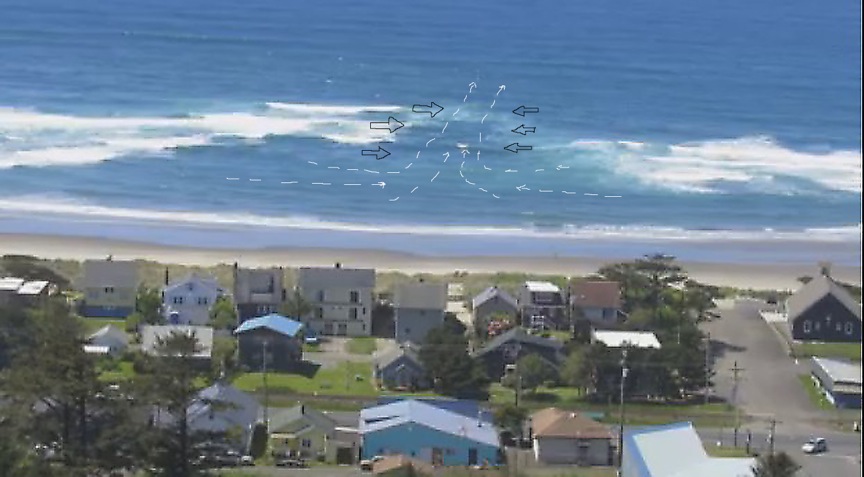By Gordon McCraw, Tillamook Emergency Manager
Rip currents are a continuous concern along our beaches. The risk is increased over the summer as more people take advantage of the warmer weather and go for a swim at our beaches.
Rip currents can occur along any coastline that features breaking waves. Scientific investigations of wave and current interactions along the coast have shown that rip currents are likely present on most beaches every day as a component of the complex pattern of nearshore circulation.
As waves travel from deep to shallow water, they eventually break near the shoreline. As waves break, they generate currents that flow in both the offshore (away from the coast) and the alongshore directions. Currents flowing away from the coast are called rip currents.

Here is a video by David Elkins of Rockaway Beach from last year that clearly shows the rip tide that occurs off Rockaway Beach.
https://www.facebook.com/david.elkins.351/videos/10155478257564474/
Rip currents are a result of complex interactions between waves, currents, water levels and nearshore bathymetry. These current systems such as alongshore and cross-shore (onshore/offshore) water motion. Along all coastlines, nearshore circulation cells may develop when waves break strongly in some locations and weakly in others. These weaker and stronger wave breaking patterns are most often seen on beaches with a sand bar and channel system in the nearshore zone. A rip current forms as the narrow, fast-moving section of water travels in an offshore direction. Rip currents can also result from a wave’s natural variability or when a current traveling along the shoreline encounters a structure such as a groin or jetty and is forced offshore.
Rip current strength and speed varies. This variability makes rip currents especially dangerous to uninformed beachgoers. Rapid fluctuations or pulses in wave groups can quickly generate rip currents with velocities measured up to 8 feet per second.
Want to learn more? Here is a mini-course you can take:
https://training.weather.gov/BreaktheGripoftheR…/player.html

.png)